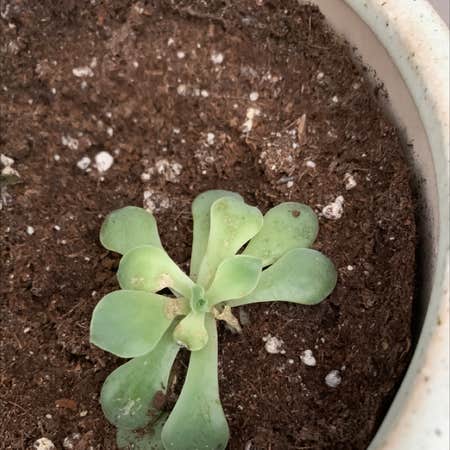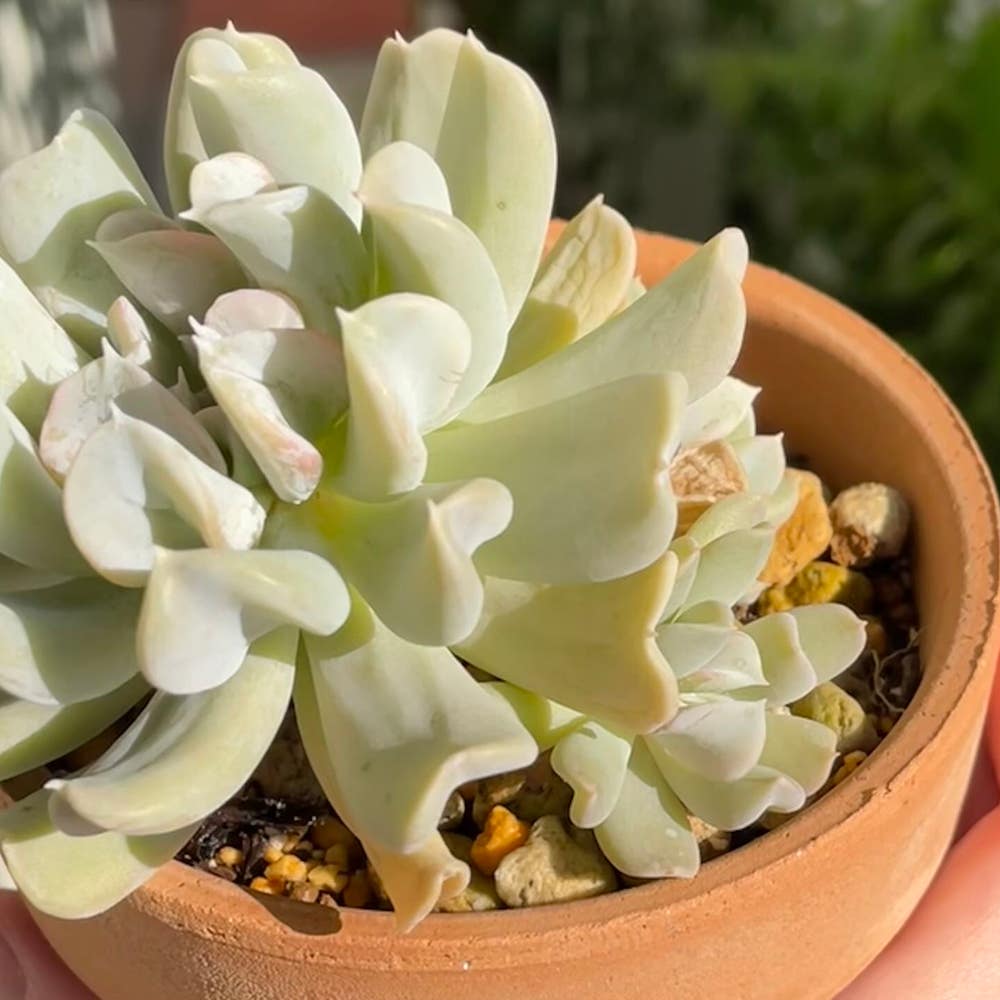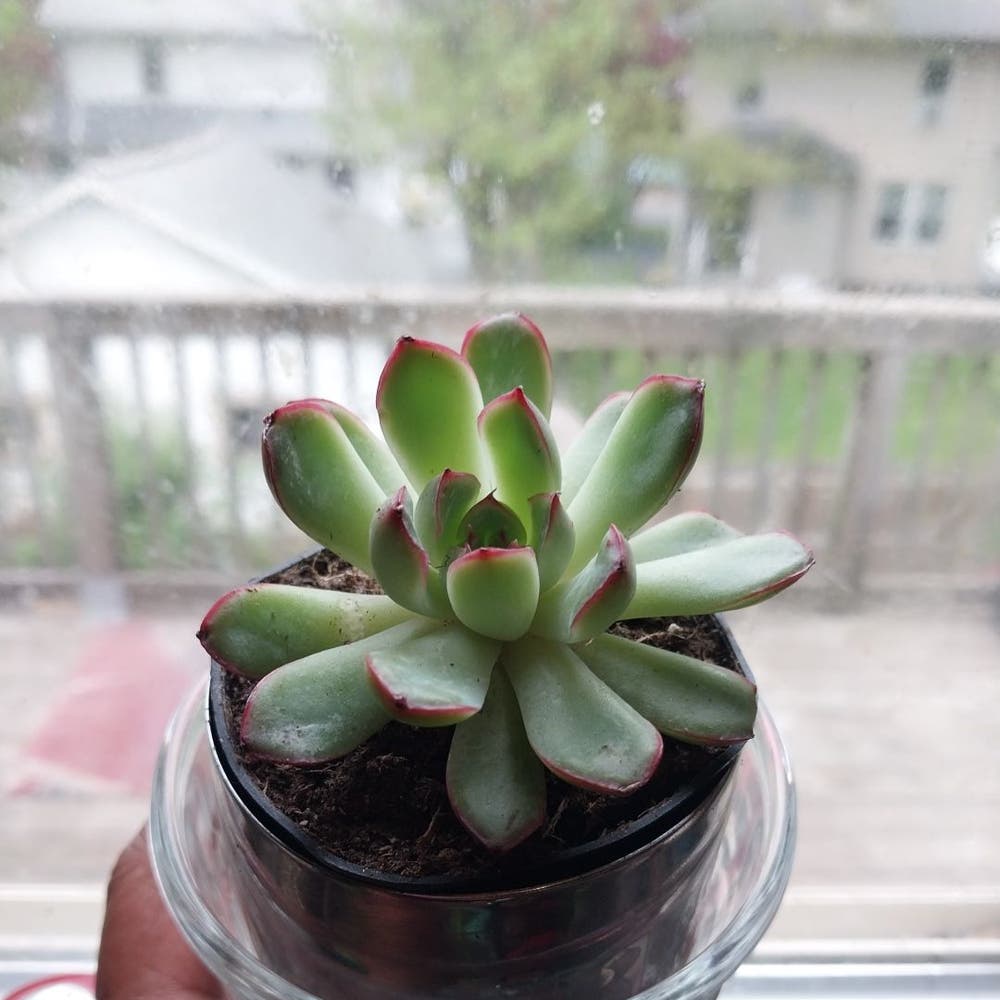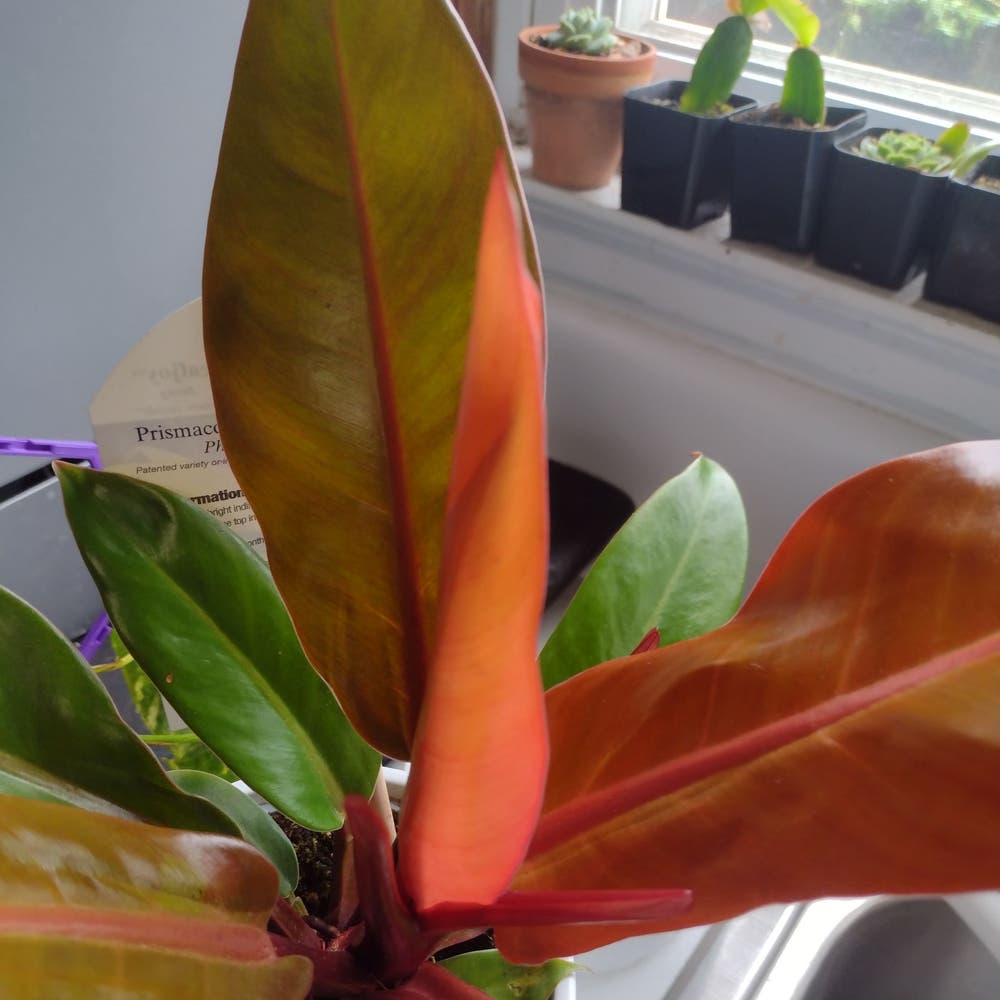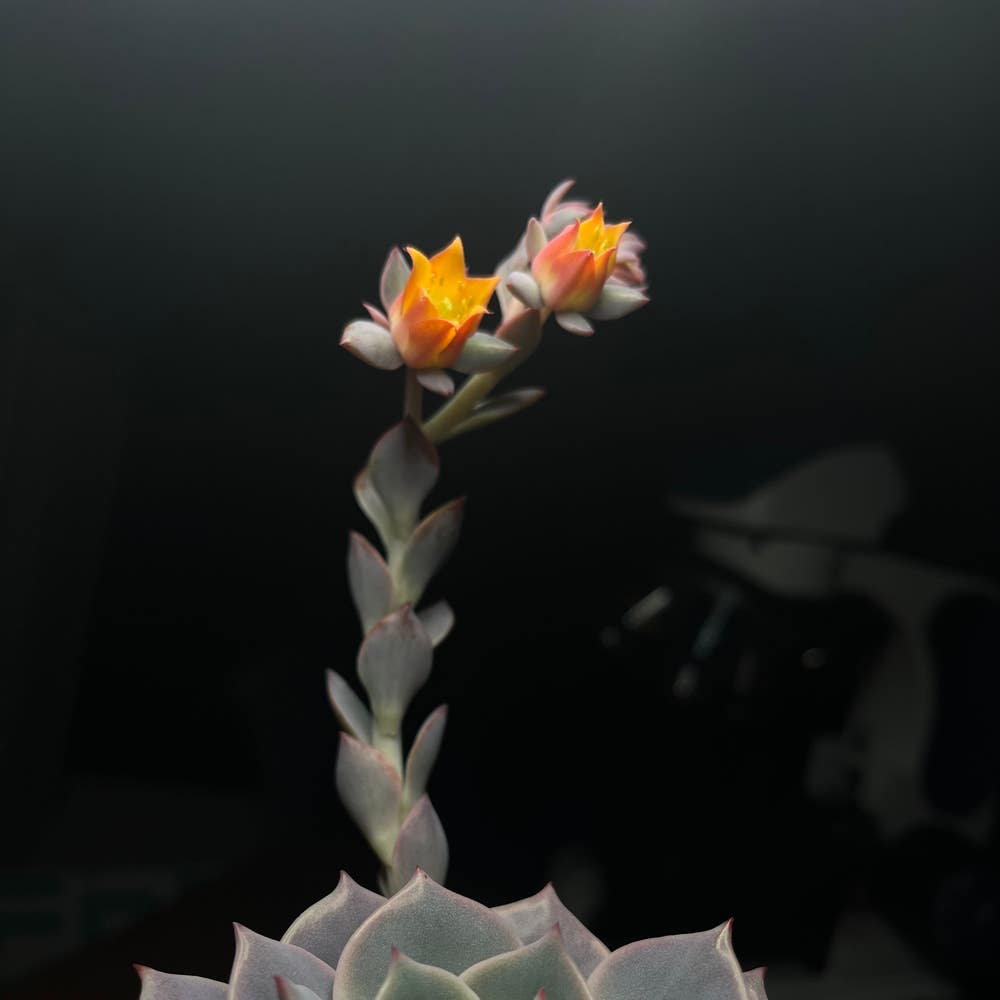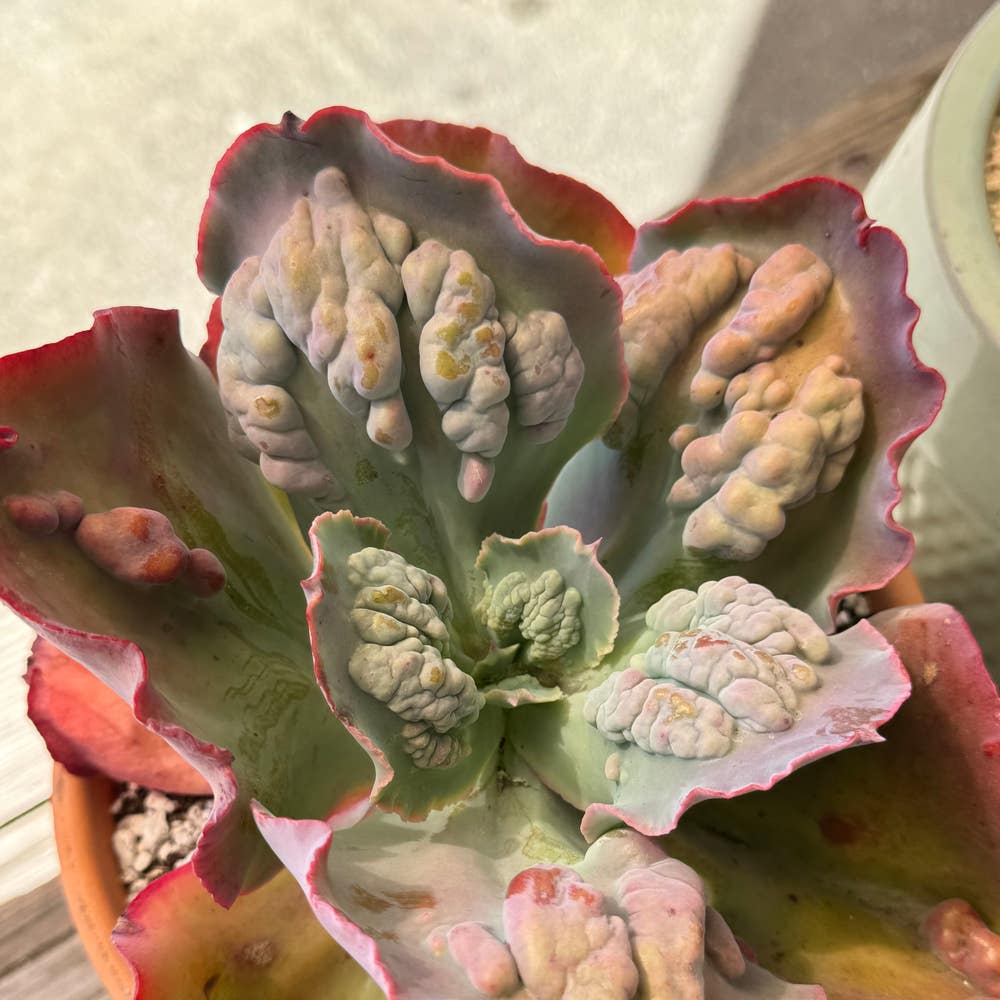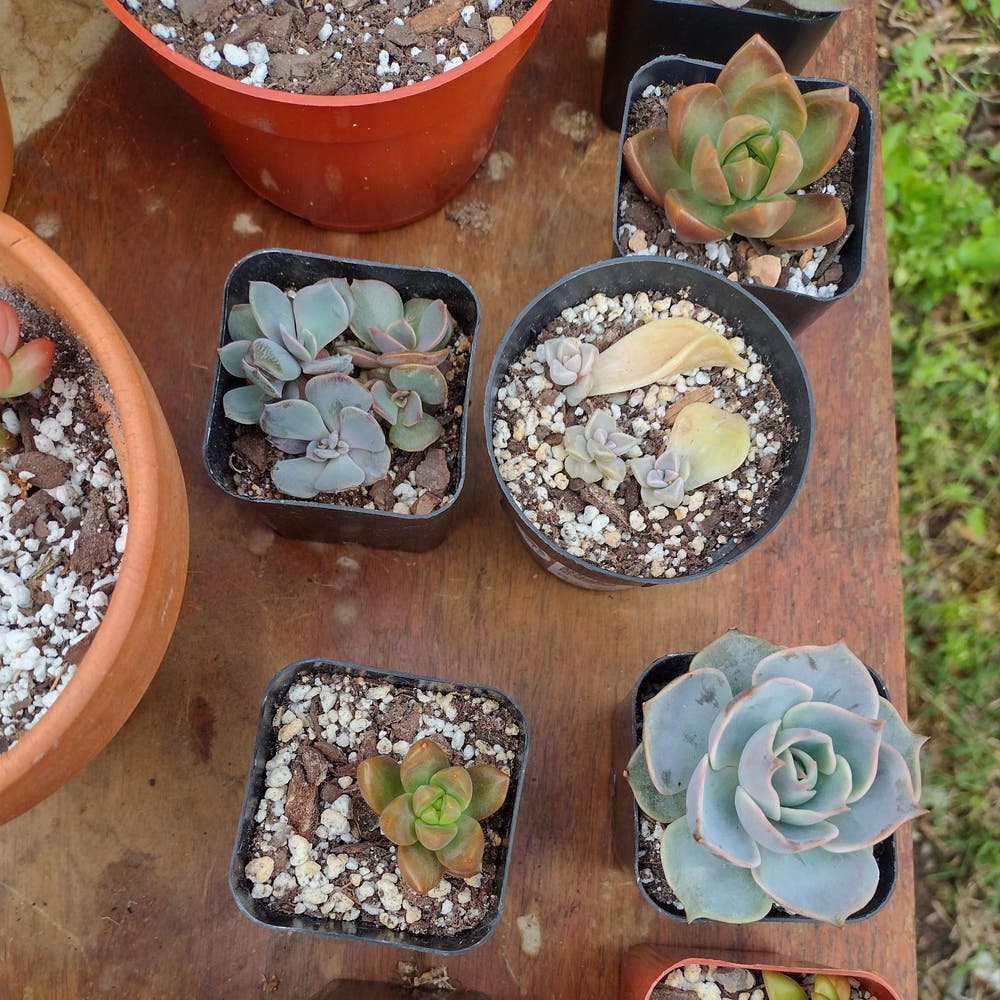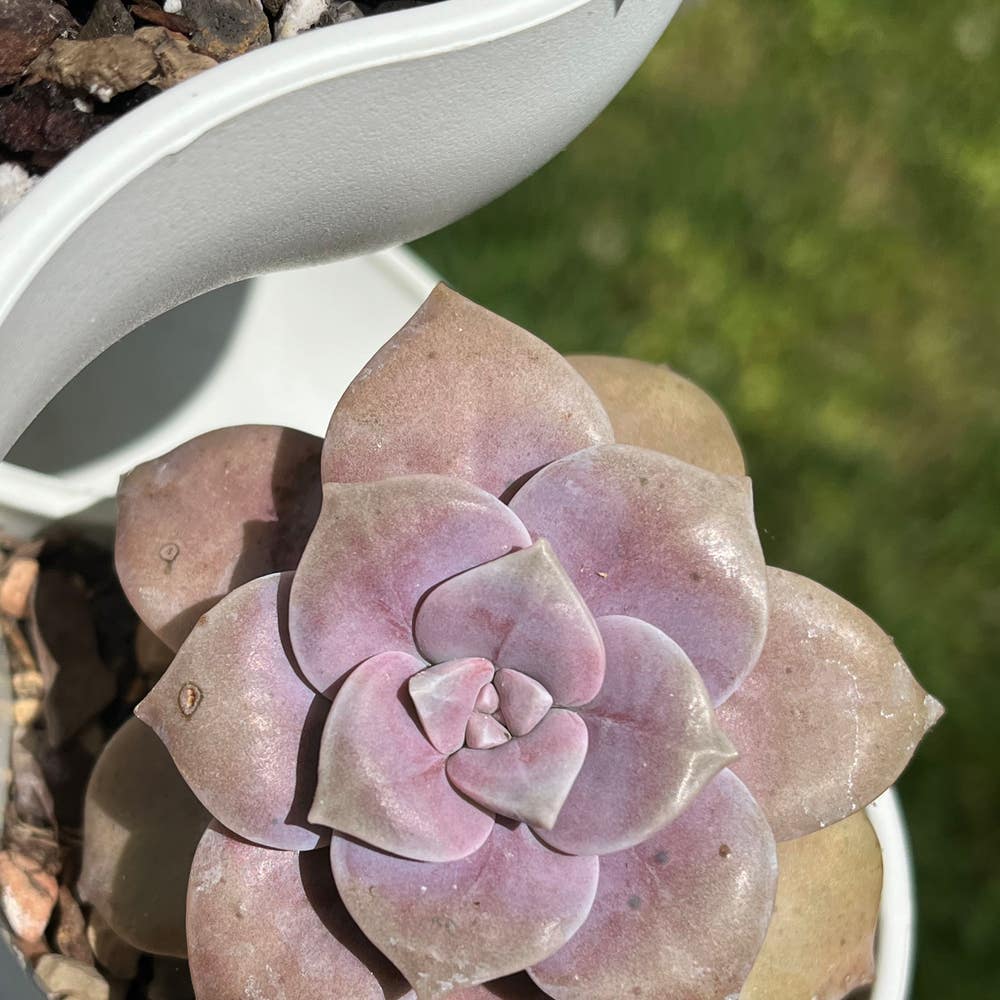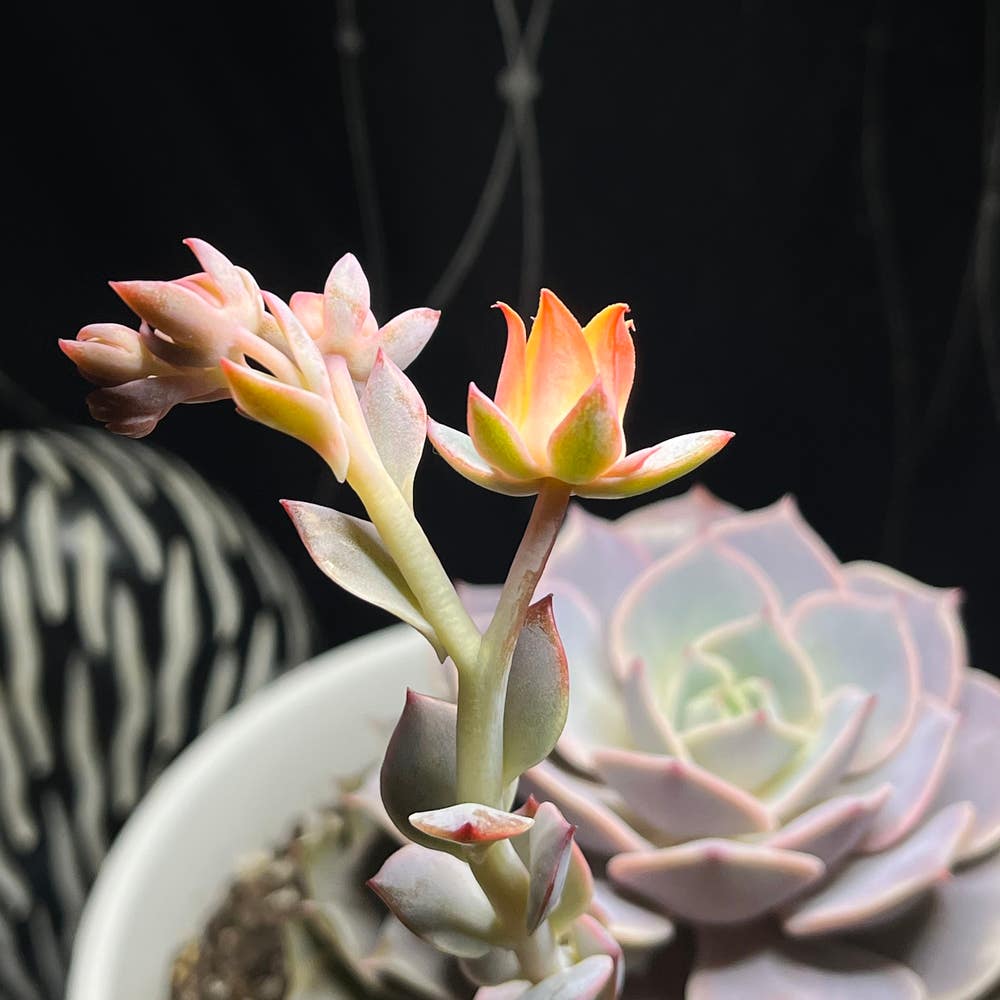Echeveria carnicolor
About Echeveria carnicolor
There are hundreds of plants belonging to the Echeveria genus, each with its own unique colors and patterns.The wild species are native to Central America and were named after the botanical illustrator Atanasio Echeverría y Godoy. They're super easy to grow as long as they get lots of sunlight. ☀️ They can be easily propagated by stem or leaf, making it easy to catch 'em all!
Taxonomy

Echeveria carnicolor
Echeveria
Crassulaceae
Saxifragales
Also known as
Cotyledon carnicolor

How to care for Echeveria carnicolor
How often to water your Echeveria carnicolor

every 12
Echeveria carnicolor needs 0.5 cups of water every 12 when it doesn’t get direct sunlight and is potted in a 5" pot.
Use our water calculator to personalize watering recommendations to your environment or download Greg for more advanced recommendations for all of your plants.

Water 0.5 cups every
12
Finding light for Echeveria carnicolor in your home

a window
Echeveria carnicolor love being close to bright, sunny windows 😎.
Place it less than 1ft from a south-facing window to maximize the potential for growth.
Echeveria carnicolor does not tolerate low-light 🚫.
Select your region to see how the current weather in your area affects the placement of Echeveria carnicolor in your home 🏡.
How to fertilize Echeveria carnicolor
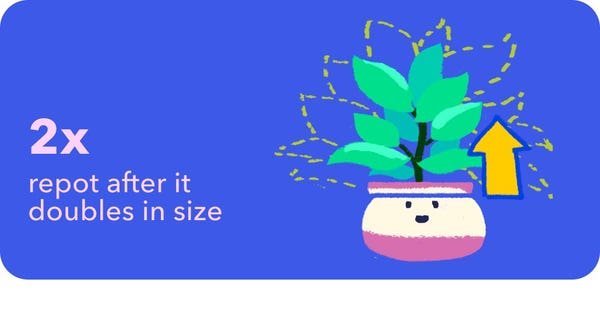
Most potting soils come with ample nutrients which plants use to produce new growth.
By the time your plant has depleted the nutrients in its soil it’s likely grown enough to need a larger pot anyway.
To replenish this plant's nutrients, repot your Echeveria carnicolor after it doubles in size or once a year—whichever comes first.
-
muffin :) her lower leaves are perpetually wrinkly but she’s still cute! check out her pup in the 1st pic <3 she has two more on the other side. [ID: echeveria runyonii ‘topsy turvy’] #SucculentSquad #SucculentLove #HappyPlants #Succulents #PlantsMakePeopleHappy #PlantTherapy #Echeveria #EcheveriaRunyonii
-
I'm in love 😍 💖 ❣️ 💕 #Echeveria
-
Someone please help me! I have never had plants before cause they always die :(( and these ones aren’t looking too good. I don’t know anything to do with:(( #Echeveria
-
New plants! This past week has been really stressful, and I've been feeling the itch for some new plants. My local big box store had a wishlist plant of mine, the philodendron Prince of Orange! 😍🧡😍🧡 For $20! And she's beautiful!! Can't wait for the new leaf to finish unfurling 🧡🧡🧡🧡 Also got some new succulents, and I'm going to try again with the Pink Diamond. I've had one before, but something went wrong with her and she didn't make it. Really hoping this one pulls through. 🤞🏻 Also got an Echeveria Arabella and a Chroma; excited to see what it'll look like over the summer. #newplants #plantsmakepeoplehappy #plantaddict #planttherapy #philodendron #echeveria #succulentsquad #succulentlove
-
Ah! I’m bursting with excitement again because she’s opened her second flower!!! #flowerpower The orange and yellow is just SO stunning, like little honey pots 🍯 💛🧡 🌱 And my cat, Zoe, is also admiring the hard work of my #Echeveria’Angel Kissed’ 😂 #HappyPlants #PlantsMakePeopleHappy #PlantAddict #NewGrowth #SucculentLove #PlantTherapy #PetsAndPlants
-
Just got this fella last weekend. The forbidden rainbow lettuce is a great addition to my collection. 😂 #NewPlants #SucculentSquad #SucculentLove #Echeveria
-
The things I do for my plants 🤦🏻 Now that spring is here, all of the trees in my backyard have leafed out, reducing the amount of light my plants get. 🙄 Combined with the coverage we have over the actual yard, and I get next to no sunlight. So I moved a side table (that I got for free on the side of the road lol) and moved my succulents out to the sunniest patch I can find. I also have a shade cloth that I'm going to put up in a bit since those guys like filtered sun in the afternoon. Had to get creative with my full sun plants, but I think it'll work. Currently looking at shower caddies to hang my plants on 👀 #plantsmakepeoplehappy #plantaddict #planttherapy #succulentsquad #succulentlove #succulents #fullsun #echeveria #sedum #pachyphytum
-
Succulent tower update 🪴 -graptopetalum ‘superbum’- slow growing so far, but she has gotten bigger -Echeveria ‘PVN’- growing pretty fast, not showing much purple since I have her in direct sun, but she likes it. She’s grown a lot! -graptoveria ‘Debbie’- my fastest growing plant in the tower right now, I’m thinking about repotting her, she’s gotten much larger then the lil space she has, I would imagine she’s used lots of nutrients too, so it may be time to repot her. I’m gonna leave her for now because she is still growing, but she is one of my faves for sure! -Echeveria ‘Atlantis’- another fast grower, he also requires a bit more water then the other when in direct sun. He has really filled out so nicely! -Echeveria ‘Green Pearl’- he had a rough start after having to remove some leaves due to damage, he is finally starting to get larger & I’ve noticed him growing the past week or so. The leaves are filling out again, & new growth is coming out! Can’t wait till he gets more full and healthy! But I’m super happy because I thought I was gonna lose him! #SucculentSquad #SucculentLove #WhatTheSuccWednesday #WhatTheSucc #Succulents #Succulent #Echeveria #Graptoveria #HappyPlants #NewGrowth #GrowingSuccs #OutdoorGrowing #OutsidePlants #Graptopetalum #PlantsMakePeopleHappy #PlantAddict
-
When I left my plant outside before going to work for it to get some direct sunlight, I came home to some parts of it getting bitten and torn. Can they heal themselves? Is there anything I need to do? Pls helppp #Echeveria
-
#FreshLeafFriday or I guess it’s fresh flower?? LOOK EVERYBODY!! After almost 2 months of cooking, my #Echeveria’Angel Kissed’ has FINALLY opened a flower!!!! I was gone for a few days, and I just arrived home to this sweet surprise!! I screamed when I saw it because I’ve been WAITING so impatiently for so long now to see her open a flower. It’s the first time she’s ever flowered, and it is so adorable!! Ahhhh I’m still jumping up and down about it! 🥹 #HappyPlants #PlantsMakePeopleHappy #NewGrowth #SucculentLove #PlantTherapy #PlantsMakePeopleHappy #flowerpower
Care Summary for Echeveria carnicolor

Echeveria carnicolor
 Greg recommends:
Greg recommends:
 Water
Water
0.5 cups every 12 days
 Placement
Placement
< 1ft from a window
 Nutrients
Nutrients
Repot after 2x growth
Based on the 4” pot your plant is in, and that it doesn’t get direct sunlight.

 Trending in your area
Trending in your area
 Similar to Echeveria carnicolor
Similar to Echeveria carnicolor
✨ Discover rare plants

Haworthia emelyae com…

Begonia lubbersii

Hoya sipitangensis

Sarcochilus fitzgeral…

Sedeveria 'Blue Elf'

Ruby Ball

Marquise de Sevigne

Echeveria Arrow

Philodendron eximium

Kilimanjaro Plant

Dinteranthus microspe…

Stomatium acutifolium

Croton Nervia

Anastasia Weeping Fig

Large Leaf Elephant F…

Hoya pottsii 'Khao Ya…

Rhipsalis clavata




